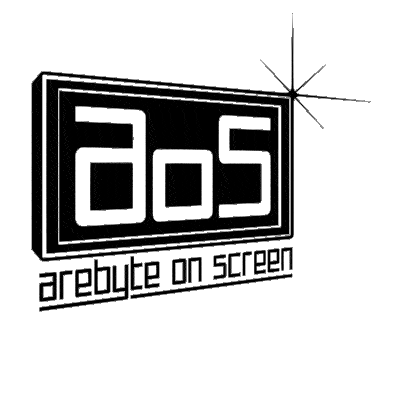Comme une journée en salon de coiffure
2019

French Hair is a double sided project. The first side is a event taking place at a corner hairdresser in Marseille on the 31st of August. The second side is a web platform presenting the works of the participating artists along with documents and media related to the event. French Hair is an art show which aims to explore open narratives and collective experience in a singular social context.
The scene takes place at a hairdressing salon.
La société des objets en présence se met en conversation.
the scissors :
I have a story I need to tell you !
the hair clipper :
I guess this will be old time…
the bottle of shampoing :
Let it speak ! We are all bored in here an I’m sure an exciting story will enjoy us all !
le rasoir :
J’ai personnellement beaucoup de peine à me réjouir d’histoires sans importance.
the mirror :
le rasoir, watch your language ! For the sake of us, please.
the scissors :
Well, if I may speak in the middle of this brouhaha…
the bottle of shampoing :
Tell us please.
the scissors :
Well, I just wanted to relate a conversation I had with comb, which as you all know, is missing since several days now. This conversation was about story telling…
the hair clipper :
I really don’t know why we ought to be involved in the “sophisticated” conversations you had with the beloved comb who mysteriously “disappeared” a few days ago, even thought I have my own opinion on that point..
the mirror :
the hair clipper, your rudeness is ruining our conversation
the scissors :
I know not everyone here has the touch required to belong to a place dedicated to beauté and wellness. I will pursue anyway. Our conversation with comb was about story telling. Or more precisely about this idea of correlation between narratives and media. Comb was defending the more mediatised our lives get, the more present the narrative is.
the bottle of shampoing :
A media society is a society of narratives ? I don’t follow..
the scissors :
Well, there are two ways of seeing this. The first is informational. When you use a media to communicate, you necessarily miss a part of the reality. There is a hors-champ, an offscreen, which hold everything of the experience your media won’t be able to transmit. The second way is historical. It’s about memory. When I relate the conversation I had with comb, I have to face the subjectivity of my own. It’s not about being honest or dishonest, about being loyal or telling the truth. It’s about being me, with my own spectrum of perception, my emotions and desires. So even with the rigour and the will of being objective as stone, I will necessarily tell you a story when I relate an event.
le rasoir :
C’est très bien tout ça, mais je ne vois pas en quoi ces élucubrations nous concernent.
the mirror :
It’s right, how does that concern us ?
the scissors :
Well, fundamentally, it doesn’t, since we are speaking objects. I just thought it would be a fun story to tell…
Curatorial Group
Romancero Gitano is an experimental curatorial group formed by Alain Barthélémy, Benjamin Collet, Laure Rogemont and Chloé Serre. The research and experiments of Romancero Gitano are oriented toward hybrid forms of art shows including narratives, sport events, dancing, sculptures for the dogs, internet community, and any form of social event that crosses the boundaries of the space/object paradigm.
Artists
Benjamin Collet deploys, assembles and compares many events and images; how things and images are built up; what they hide and what they mean. He sets displays made of tools, materials and features in aim to create speeches, tales and fictions. Combining writing, documentation, archiving as well as sketch, sound and video, his installations are kind of «ideas cases». All those fragments and tracks form/create a kaleidoscopic investigation of our world.
Alain Barthélémy‘s work is composed of texts, objects, and media which take part of a program one could qualify as anthropo-fictional. His production most often brings to the surface missing narratives, origins and context of the objects being left to the unknown. His material is, in that sense, as much the multiplicity of the untold stories as the physical existence of his installations. Untold, but yet rooted in a speculative anthropology, which would go beyond its original subject of the anthropos, to include an extended network of beings, from the machine to the animal through the invisible and the unspeakable.
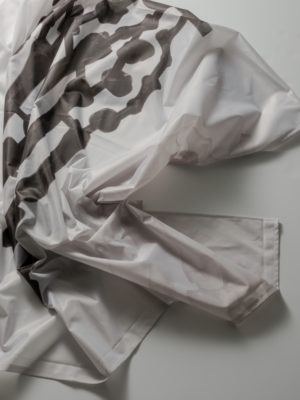
Marc Etienne makes pieces speaking for themselves and being laconic at the same time, pieces which are absurds and making sense, pieces which are obvious and vague, indecisive and determined at the same time. He doesn’t want his pieces to be definitely how they look like. He likes to change the texture, the dimensions, the meanings according to the occurrence. Which is maybe for him a way to avoid taking decisions too quickly.

Pierre Gaignard‘s work is related to a wild ethnology, it is above all because his films, sculptures, or performances, are objects of study which do not take any distance with their subject: when he is interested, for example, in Atlanta rap, he does so in a documentary mode that takes care of an energy capable of translating the maximum absorption of what this music transmits.
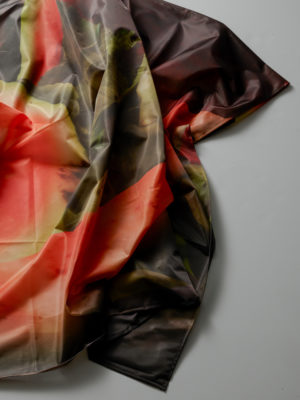
Marie Grimal was born in 1992 in Amiens. She studied at Beaux Arts in Lyon and at the School of Art and Design in Saint-Etienne. She had the opportunity to participate in several exhibitions: Streep-tease at Somme-Toute (Clermont Ferrand), Jardin d’hiver at Quatre-Vingt-Onze (Paris), Peinture en pâture at Villa Belleville (Paris), Promenade domestique to St-Pierre Church by Corbusier (Firminy), 45 °north 5 °south at the Bernard Ceysson Gallery (Saint-Étienne) and at the Saint-Étienne International Biennial of Design in 2017. She realized several Bel Ordinaire residences at Villa Belleville and at Somme-Toute.
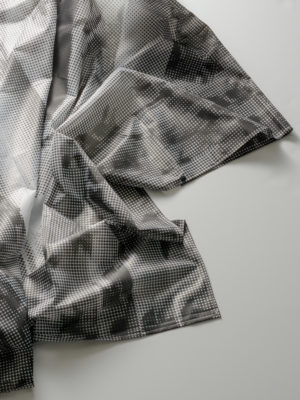
Hélène Hulak et Guillaume Seyller is an artists duo working with painting and Virtual Reality. They share a commun research around the questions of the body and its representations as long as a certain taste for darkness. Their collaboration produce a strange cosmology, populated with flashy monsters traveling from
drawings to paintings, passing by VR installations and 3D scenes.

Christopher MacInnes is an artist based in London. Taking computing and networks as a starting point he works with software, hardware and organisms. Using the diverse vectors of our planetary networks, MacInnes attempts to trace the mycellenic tangle of chaotic phenomena across platforms, landscapes and bio-synthetic ecologies
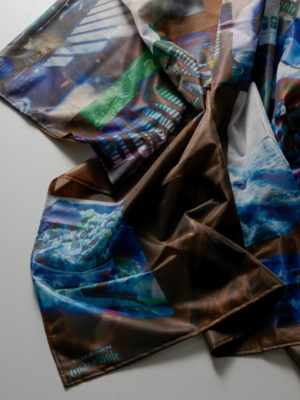
Camille Soulat is a visual artist focused on the concept of memory ; she observes her relatives before transforming them into digital painting. Frozen scenes, captured buy the blurs and filled with saturated colors. The layers of pixels overlays and mix in a digital lazyness, as heavy as sedative.
[Photography by @lenancker]
Graphic Designer
Laure Rogemond is an independant art director based in Paris. She focuses on fashion and contemporary art projects in the fields of artistic direction, photography and editing. Whether it’s a book, a space or a visual identity, she uses graphic design as a social vector. She explores social issues such as the refugees crisis, gender or work organisation. Thanks to a rigorous approach, her colorful and conceptual universe questions our stereotypes and behaviors.
Alain
So about the project, the first question I wanted to ask, is what’s your feeling about it ? Or less straight forward, how do you represent the form of this project ? In our group (romancero gitano) we had long discussions of what makes an art show. What are the conditions of its existence or non-existence. What is the part of the statement, what is the force field which connects historicity and narrative. I think especially working on forms that lies in between digital, deterritorialized and physical raise a lot of questions of that kind…Rebecca
This project is fascinating (and timely) on many levels. It’s about a community (of people, objects, ideas), but it’s also about a solo experience; there’s an aspect of the mundanity of life-admin coupled with the involuntary participation of viewing and wearing an art object; it’s about the intersection of vanity and ego, with conversation and relaxation as contradictory outlets; it’s about the nuance of historical and modern day ‘salons’ – the 18th century social gatherings in which individuals engaged in the art of conversation in pursuit of knowledge and fellowship, mixed with the modern day functionality of getting a haircut, but also the forming of friendships, participatory democracy and the revival of social debate.On AOS, French Hair occupies many spaces – the platform is used as a promotional tool for the event, as an archival tool for photography and video, as a starter for conversations, and as a gallery for showing the work of the artists involved. In this way, the project becomes a conglomeration of many ‘hats’, formed of a research group, a commodity, a tête-à-tête, an exchange (monetary, verbally, experientially) but it also aligns with a relational aesthetics mode of production whereby the human relations and social context are the point of departure.
There is a performative context afforded to the project too, whereby the act of putting on a robe changes the way you are received in a space like a hair salon – it’s unavoidable. The objects themselves also play a performative role in that the works printed on them (which perhaps were once kinetic of some sort) are now still, screen- grabbed or rendered immobile via the transportation of them from the digital into the real. What does it mean to bring a digitised object into a physical space?
Alain
Well I think one of the first time the idea of the project in its current form came up, was unsurprisingly at a corner hairdressing salon in Lyon. Amongst the fake LV’s and Gucci’s, stood a robe quite more interesting than the others. The robe was digitally printed with photographs of haircuts so you could literally choose on your robe, the cut you wanted to have ! Beyond the «fun fact», this was a good starting point to think about the question of the screen. Of course, a screen is trivially this variable sized electronic device we are quite familiar with, but it is also any surface designed to channel one attention, most of the time for mercantile purposes. So it doesn’t need to be lit, nor it needs to be interactive, it just have to be the surface of an image dedicated to catch and hold human attention. In that sense our invitation to the artists to take over those hairdressing robes with digital printing was a disguised proposal of screening. And I think they understood that quite well and their works resonated perfectly with the format. So I’m not sure something was moved from the digital to the real or to a physical space, I think we just experimented a peculiar type of screening, with fabric instead of LEDs or liquid cristals. Yet the context of the event, an afternoon in a hairdressing salon, also sets up the rules of play. And even if one could see Fench Hair as an “undercover” art show of some sort (une exposition livrée en sous-main), I think the rules of play here, as you mentioned, were more the ones of an everyday-life social event or situation. So the salon Athena Coiffure really played the role of a host, and we, even if we initiated the thing, really felt as guests. So in that sense, it would have been quite a clumsiness to intend to transform the salon to a temporary art gallery. As in a host-guest relationship, what came more naturally was an experience of a being-with and a being-within.Another question we were confronted with, was the question of documentation. We had to find a way to share the project and the works of the artists beyond the temporary existence of the event. With that in mind frenchair.shop was created as a documentation platform as much as an autonomous online version of the project, with the graphical parti-pris of taking over the aesthetics of e-commerce websites. So the question of the screen also finds an echo here, on a more semiotical aspect.
Those formal questions, came along with a theoretical concern which regards the place of the narrative (le récit) in a documentation process. We were quite conscious that there is always a story being told along with an art show or an event of that kind. Modernity could be characterised by the profusion of hegemonic figures as the central characters of those stories. So we preferred to keep distance from anything which would resemble to a big story and get closer to a more anecdotic and common one.

